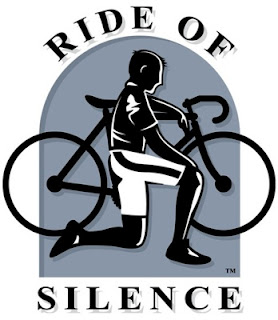On Wednesday May 16 I will be speaking at the Columbus, Ohio Ride of Silence. This ride usually draws BIG crowds – 700+ riders – at the State Capital.
In thinking about what to talk about … there are so many topics it’s hard to know where to start for a brief 10-15 minute presentation.
Certainly the Hit/Run Epidemic should be a topic. Columbus, and Ohio, has had its share of hit/run fatalities in the cycling world over the past couple years:
– Jeff Stevenson – 5/21/2010 [Columbus]
– Trent Music 11/16/2010 [Columbus]
– James Trammel 9/20/10 [Clermont]
– Kristina Godinez – 6/10/11 [Columbus]
– Martha Miller 12/23/11 – [Logan County]
A quick google search of “hit/run epidemic” reveals stories about such things in Chicago [blaming illegal aliens], LA, Houston, and Miami
As I pointed out in a prior piece – the question of WHY is easy – because a) You Don’t Get Caught or b) You Don’t Get Caught While You’re Still Drunk or c) You Don’t Have Insurance or d) You Have Outstanding Warrants or, the BIG one, e) Even if they DO catch you, you’re not likely to do much time for killing someone… 30 days is apparently the going rate in Columbus…
Another topic is What Cyclists Do Wrong –
– Run Stop Signs – in 2010 two of the 11 cyclists killed were experienced riders who were struck when they attempted to cross from a bike trail to a road
– Night Riding – This is an ongoing problem – riding at night without appropriate gear. In 2010, the 3 hit/run deaths each involved riders who were unlit. In 2011 there were four fatal crashes in the dark. In three the riders were unlit – in one, Martha Miller had full lighting AND a reflective vest as she rode home from her job as an Amish school teacher two days before Christmas…
What Can Help?
To me, CLEARLY, UNEQUIVOCALLY we need to EDUCATE MOTORISTS that Cyclists have the right to use the roads – virtually ANY road in Ohio- at any time day or night, in any traffic conditions… Until cyclists are simply accepted as one bright thread in the multi-colored “fabric of traffic” we will continue to be seen, and treated, as second class citizens by motorists, and even police officers in many jurisdictions…
In addition to educating motorists, we CLEARLY & UNEQUIVOCALLY need to EDUCATE CYCLISTS – Riders need to understand that once you cross the line – the line that separates the world into two parts – the parts ON the roadway and the parts NOT ON the roadway – once you cross that line and go ON the roadway, you have to take this driving business very seriously. This means riding LEGALLY – obeying traffic control devices, NOT running red lights and stop signs, NOT weaving through traffic, lane splitting and otherwise behaving as a kid on a toy, not a serious vehicle operator.
Motorcycle training is excellent for this, as I have written many times… the “SEE” approach has the rider looking several seconds up the road for potential problems, developing a plan to deal with those problems and implementing that plan early enough so as to AVOID the potential problems – for cyclists this means SEEING the “door zone ahead and moving out early enough that you are not likely to get zinged by an unseen door opener – or plotting a line through traffic early enough to make an effective, NON-scary left turn… In the motorcycle world, you are taught that this is a constant, ongoing dymanic process which can change second by second… for the cyclist, it’s more foot by foot –
The Ride of Silence is an outstanding event – not a race, just a slow, quiet casual ride which allows riders to MAKE a POINT – we are HERE and we’re NOT GOING AWAY – while quietly remembering, and honoring, those who lost their lives on the roads….
Let’s be careful out there…
Steve Magas
© 2025.

Steve is spot on about SEE. The difference between a bicyclist vs. a motorcyclist is speed and inertia. A bicyclist indeed goes foot by foot compared to a motorcyclist. But the underlying rules still apply: obey the laws, practice your situational awareness, and employ SEE appropriate to your scale of motion.
I rode motorcycles from 1973 to 1987 and just took it up again last year. I’ve ridden bicycles the entire time with a brief lapse during my undergraduate years for the usual degenerate undergraduate behavior. SEE, and its bicycling analogs, have kept me alive–more than 90% of safety is between the earlobes.
Oh, and SEE = Scan, Evaluate, Execute
Here is a paper.
http://www.msf-usa.org/vru/MSF_Tools_for_Improving_Hazard_Perception.pdf